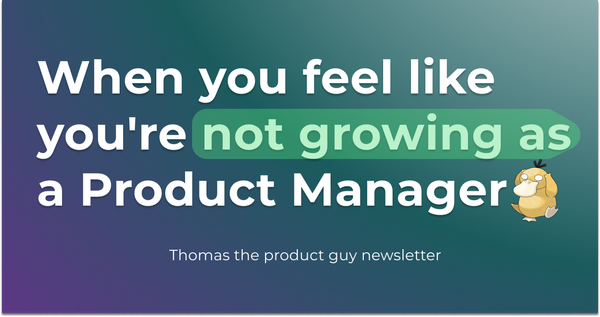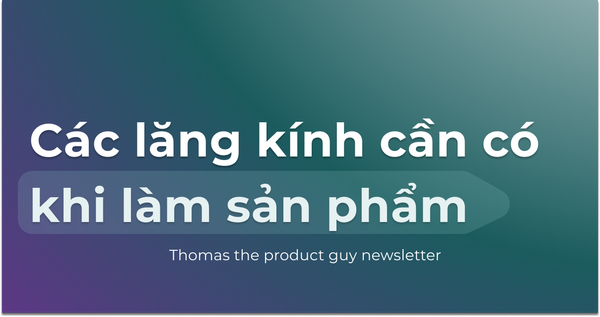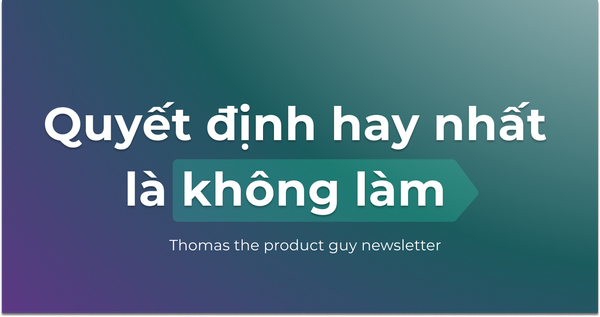#27 - Midjourney & Community-Driven Product Development
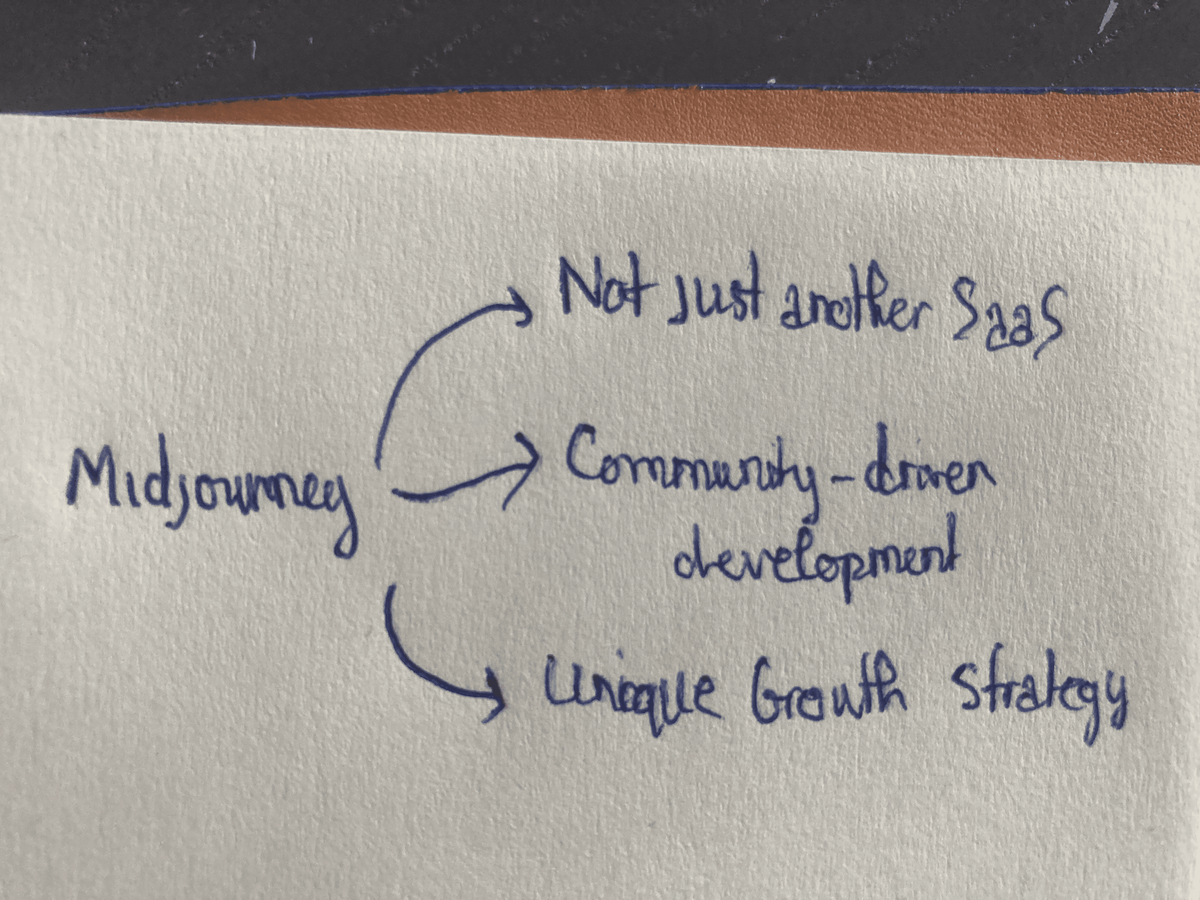
Hi there 👋, I'm Thomas - I have a paid community for Product Practitioners who want to level up and gain mastery in Product. Join us here if that description seems to fit you!
As product managers, we're always on the lookout for innovative approaches to building and growing products. Today, I want to dive into Midjourney, an AI image generation tool that's challenging conventional wisdom about product development, community building, and growth strategies.
👉 This blog post was inspired by this great Podcast episode, I'd highly recommend a listen if you have time.
Not Just Another SaaS
Many people are blown away by this fact (me, included), but Midjourney is a completely bootstrapped company, that generates over 200 million dollars in ARR! Their growth trajectory in terms of active users is astonishing.
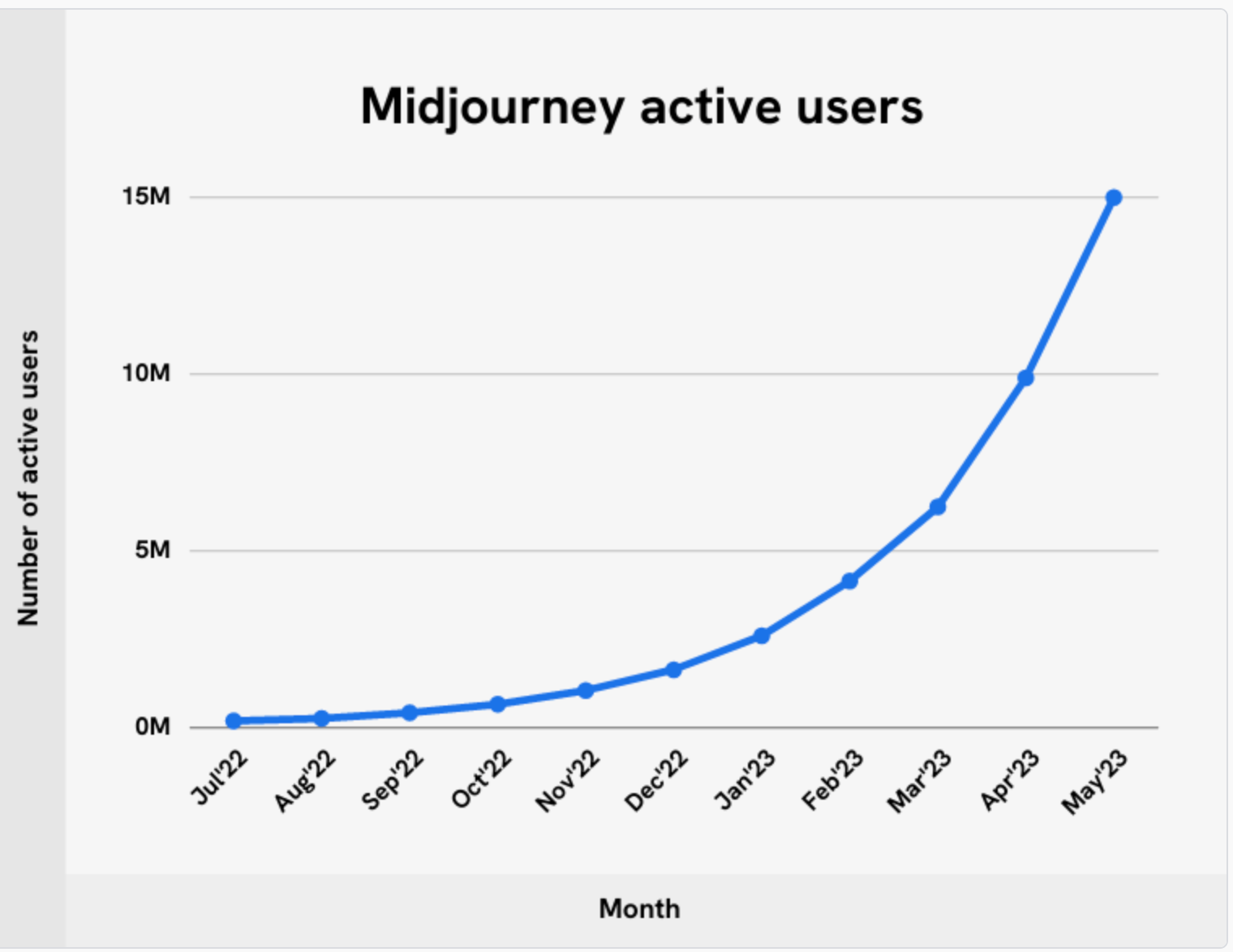
Let's be clear: Midjourney isn't just another SaaS product. It's a deep, complex offering that's more akin to introducing a new language than launching a typical software service. This depth is intentional and core to its value proposition.
What sets Midjourney apart is its laser focus on one thing: understanding and generating beauty through AI. The founders recognized that this alone is an enormously challenging task. Instead of diluting their efforts by building a full-fledged social platform on top of it, they chose to concentrate on refining their AI model in close collaboration with their user community.
Community-Driven Development
Speaking of community, this is where Midjourney really shines. Unlike many startups that view community as a distribution channel or a growth hack, Midjourney has made it the centerpiece of their product development process.
They've taken an interesting approach: rather than building community features into their product, they've leveraged Discord as their community platform. This allows them to focus on their core competency (AI image generation) while tapping into a robust, real-time communication platform.
Completely skipping over complex user interfaces, maintaining web servers, setting up a platform to collect customer feedbacks, Midjourney built their offering on top of Discord, which side steps all potential issues and complexity that would have prevented them from iterating upon the core product (the AI model) as effectively.
Discord is a platform to build communities, which means it already comes with a plethora of features that engage and excite community members. Many users generate AI images on public channels, which allow the Midjourney team to observe how their product is actually being used. Discord also provides easy ways to set up polls that collect customer feedbacks in the same place as where people would hang out and converse.
The nature of Midjourney requires not just the brainpower of a few people, but collective efforts to iterate and improve upon the core model for AI image generation. By building on top of Discord, Midjourney places the community at the center of their product development process, creating a super tight feedback loop that's essential to their product development.
The result? A tight-knit community of users who aren't just consumers, but active participants in the product's evolution. They work together to craft effective prompts, discover hidden capabilities, and push the boundaries of what the AI can do. This creates a powerful feedback loop that continuously improves both the product and the community's expertise.
Unique Growth Strategy
Midjourney's growth strategy is as unconventional as its product. They've discarded the typical freemium model in favor of a paid-only approach. This naturally selects for a more serious, dedicated user base – primarily professionals and passionate hobbyists in the 25-45 age range.
By using Discord as their primary platform, they've also sidestepped many of the growth hacking techniques common on other social platforms. There's no algorithmic feed to game, no viral mechanics to exploit. Instead, growth comes organically through word-of-mouth and the genuine excitement of users sharing their creations. This is a forcing function that requires Midjourney to really focus on perfecting the product so that it delights and compels its users to share and invite their friends.
When to Consider This Approach
While Midjourney's approach is fascinating, it's not suitable for every product. This strategy seems to work best for:
- Deep, complex products with hardcore user bases
- Products where users need to collaborate to fully explore and unlock capabilities
- "Hobby" products that users engage with frequently (multiple times a day)
- Products where the community can have a tangible impact on the product's evolution.
It's less suitable for straightforward, job-to-be-done tools or products with infrequent, transactional usage patterns. For example, in my previous chapter I worked at SaaS company specializing in test automation.
- Not many automation testers are hardcore users.
- They don't explore tools often to unlock new capabilities (testers tend to be conservative, for some reasons).
- Not many of them treat test automation as a "hobby". It's a job that they have to do.
- Our community of testers, while helpful, did not have a tangible impact on the product's evolution.
I think the community-driven development approach wouldn't have been as impactful for my previous employer as it did for Midjourney.
The Takeaway
Midjourney's success challenges us to rethink some common assumptions in product management:
- Sometimes, doing one thing exceptionally well is better than trying to build a full-featured platform.
- Community doesn't have to be a growth hack – it can be the core of your product development process.
- Conventional growth strategies aren't always necessary. A paid-only model can work if your product provides enough value.
- Existing platforms like Discord can be leveraged creatively, allowing you to focus on your core competency.
As product managers, we should always be open to new approaches. Midjourney's story reminds us that sometimes, the path to building a great product isn't about following the established playbook, but about understanding your unique value proposition and aligning everything – from your development process to your community strategy – around that core strength.
As someone who's operating a paid community of Product practitioners, I found the story of Midjourney incredibly inspiring. I very much look forward to putting these insights into practice!
